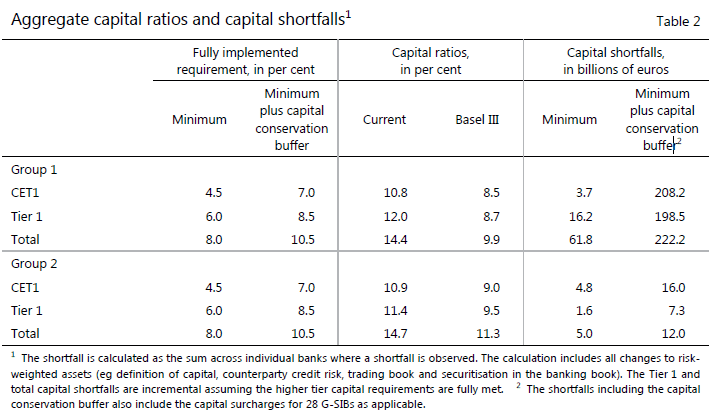
The Bank for International Settlements (BIS) last night released the results of its periodic monitoring exercise on banks preparations for Basel III. The study was based on 210 banks, comprising 101 large (‘Group 1’) banks with Tier 1 (core) capital in excess of €3 billion, and 109 smaller (‘Group 2′) banks. Australia had five banks in the survey: four Group 1 banks (the big four) and one Group 2 bank.
The study found that for all Group 1 banks to meet the 4.5% minimum Common Equity Tier 1 capital ratio (CET1), capital would need to be increased by €3.7 billion. The overall shortfall increases to €208.2 billion to achieve a CET1 target level of 7.0%, which includes the capital conservation buffer as well as the surcharge for global systemically important banks (where applicable).
As a point of reference, the Group 1 sample’s total profits after tax between 1 July 2011 and 30 June 2012 was €379.6 billion, meaning that their overall capital shortfall is equivalent to around six month’s profits. This is down from 15 months in lats study so progress has been made.
For Group 2 banks, the additional capital needed was estimated to be €4.8 billion to meet the minimum CET1 ratio, or €16.0 billion to reach the CET1 target of 7.0%. As a point of reference, the sum of these banks’ profits after tax between 1 July 2011 and 30 June 2012 was €22.9 billion, meaning that the capital shortfall for Group 2 banks is equivalent to around eight month’s profits.

The BIS study made no assumptions about bank profits or behavioural responses, such as changes in balance sheet composition, which could serve to ameliorate the impact of capital shortfalls over time.

